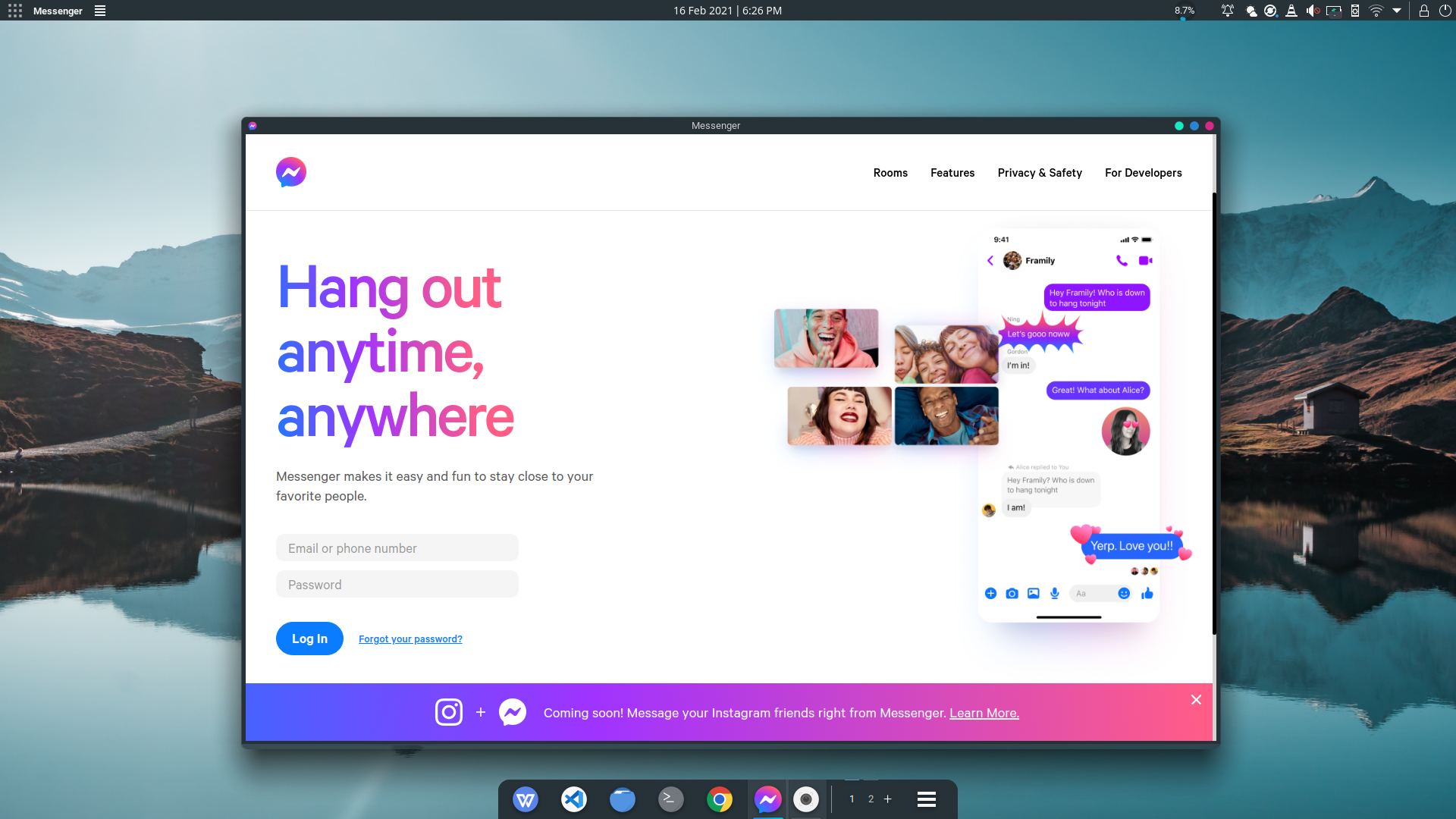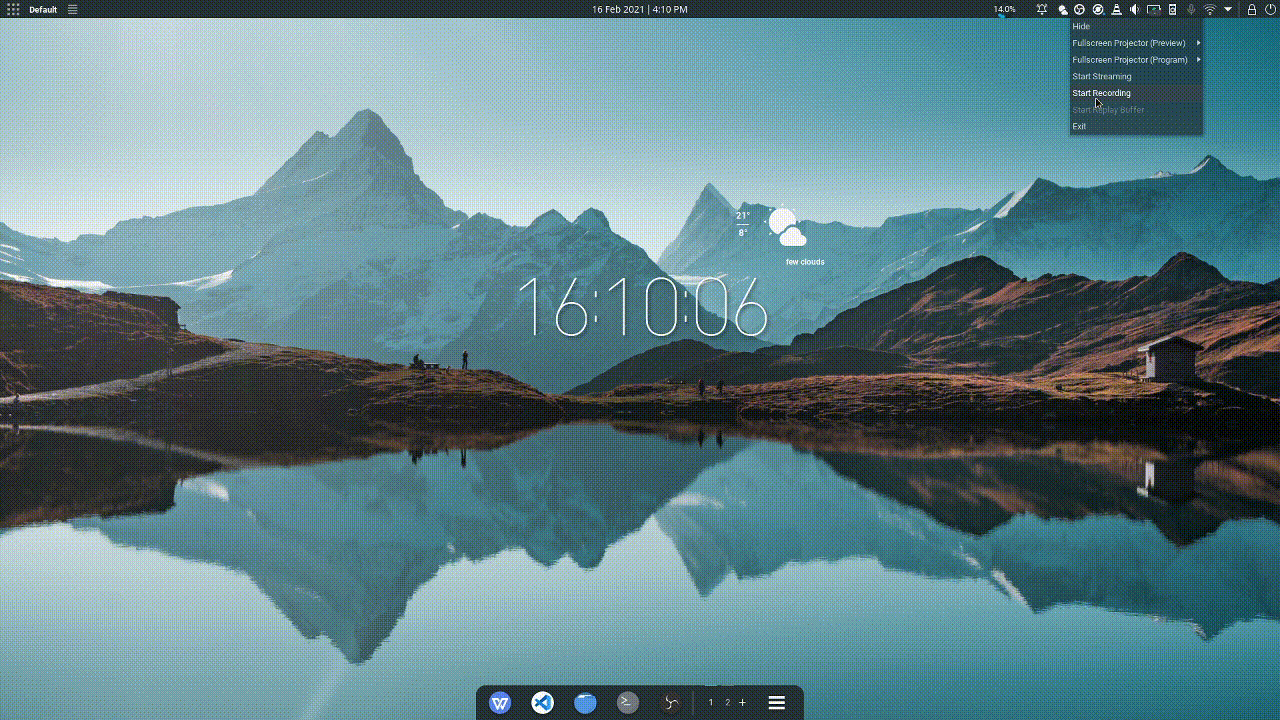Appnativefy is an NPM package to make executable AppImage files from any website, it uses the Nativefier API in the backend, with AppImageKIt.
AppImages are cross-distro unlike .deb or .rpm. Plus, you dont have to face the hassle of individually installing the package, and another hassle while uninstalling.
With AppImages, there's no installation required, click-to-run.
Uninstall? rm -r <file name>.AppImage
Simply delete the file.
Make a native AppImage for ANY website

npm install -g appnativefySupported for: GNU/Linux Operating Systems
Architectures: amd64 (Soon adding support for additional architectures)
- Node.JS
- NPM Package manager
- Wget
You can install these by:
sudo pkcon update (for KDE Neon) | sudo apt-get update (for all other distros)
sudo apt-get install nodejs npm wgetsudo pacman -Syu
sudo pacman -S nodejs npm wgetemerge nodejs wget For example, to make an AppImage for YouTube, simply run,
For example, to make an AppImage for YouTube, simply run,
appnativefy --name "YouTube" --url "https://youtube.com"
But if you wish to sign-in to YouTube, pass --services, this argument enables to sign-in using services such as Microsoft 365 and Google, in sites that support them. So, you'll be supposed to run
appnativefy --name "YouTube" --url "https://youtube.com" --services
Generally the command is:
appnativefy --name <value> --url <website url> <additional options>
It is recommended to pass the values inside double quotes " ", so that it may not cause any errors. Also, whitespaces in the value of --name will be replaced with hyphens -. This means, if the name is supplied as --name "Hello world", it will change into Hello-world.
The built AppImage will be found in ~/appnativefy, with the file name: <name>-x86_64.AppImage
- --help | -h
appnativefy --help, appnativefy -h
Prints possible command-line options
- --version | -V
appnativefy --version, appnativefy -V
Prints the installation directory and version of installed appnativefy
- --name | -n [REQUIRED]
--name <value>,-n <value>
To specify the name of the AppImage to be built, ---url | -u and --name | -n are required options, also, it is recommended to enclose the values using doublequotes " ".
- --url | -u [REQUIRED]
--url <value>, -u <value>
URL of the website, that is to be nativefied.
- --internalurls
--internalurls <REGEX>
Regular expression for internal URLs.
- --appCopyright
--appCopyright <value>
Copyright information
- --appVersion
--appVersion <value>
App version info
- -e, --electronVersion
-e, --electronVersion <value without the "v">
Specifies which version of electron framework to be used by the AppImage.
- --saveAs
--saveAs
Shows a "Save As" dialog while downloading.
- --favicon
--favicon
Forces to use the favicon of the site while making the AppImage. If not specified in certain cases, the icon may be different than expected in sites such as Microsoft Teams.
- --widevine
--widevine
Adds Widevine support to the AppImage, to enable playing DRM enabled content in sites such as Spotify.
- --services
--services
NOTE: If passed without --internalurls will default to (.*) as internal URLs.
Changes the useragent to Mozilla/5.0 (X11; Ubuntu; Linux x86_64; rv:85.0) Gecko/20100101 Firefox/85.0 to overcome incompatibilty with Microsoft 365 and/or Google sign-in services.
- --noOverwrite
--noOverwrite
Specifies that the directory should not be overwritten if already present.
- --conceal
--conceal
Conceals the sourcecode of the electronized website inside the AppImage into an ASAR archive.
- --counter
--counter
Use a counter that persists even with window focus for the application badge.
- --singleinstance
--singleinstance
Only a single instance of the AppImage will execute, if already running, the instance will be brought to front.
- --disablegpu
--disablegpu
Disables hardware acceleration, in the AppImage.
appnativefy --name "Google" --url "https://google.com" --services
https://github.com/sarweshparajuli/appnativefy-gifs/raw/main/examples/Google-x86_64.AppImage
appnativefy --name "Messenger" --url "https://messenger.com" --services --favicon
https://github.com/sarweshparajuli/appnativefy-gifs/raw/main/examples/Messenger-x86_64.AppImage
appnativefy --name "Microsoft Teams" --url "https://teams.microsoft.com/_" --services --favicon
appnativefy --name "Spotify" --url "https://open.spotify.com" --services --widevine --favicon
https://github.com/sarweshparajuli/appnativefy-gifs/raw/main/examples/Spotify-x86_64.AppImage
appnativefy --name "YouTube" --url "https://youtube.com" --services
https://github.com/sarweshparajuli/appnativefy-gifs/raw/main/examples/YouTube-x86_64.AppImage
